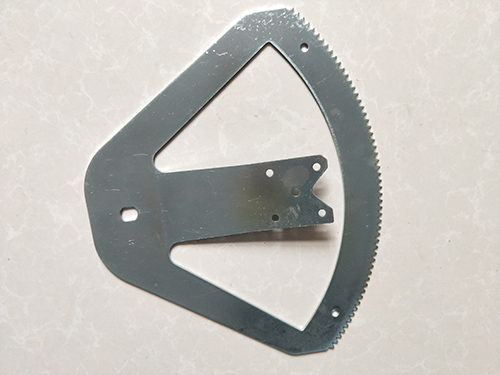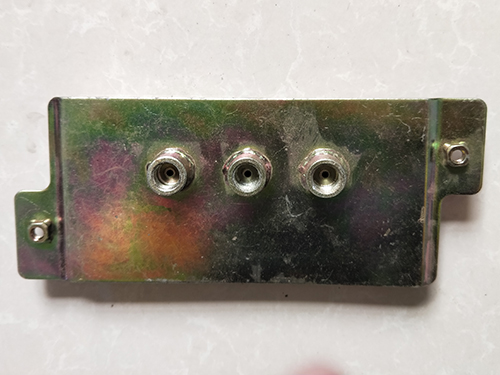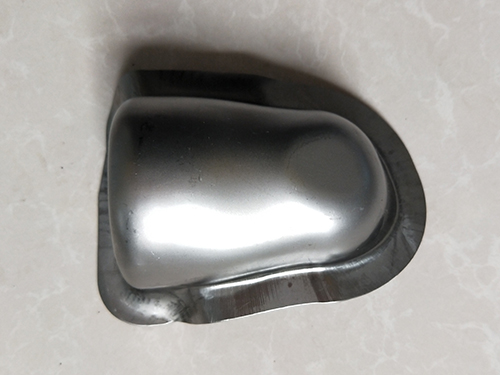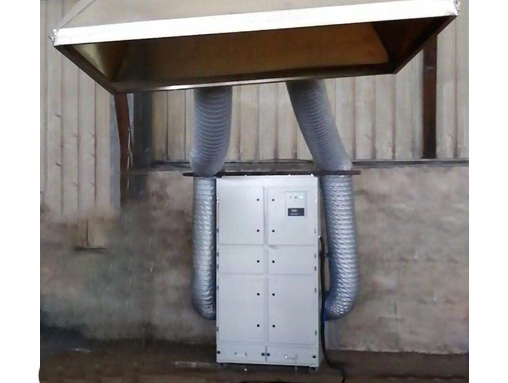Structural characteristics and production process of stamped parts
Stamping parts are generally made by punching the required holes and profiles on materials (such as steel plates), requiring that the positions, shapes, and sizes of the holes and profiles be consistent with the drawings, with errors within universal or enterprise defined tolerances, and have a good surface without obvious defects such as burrs, sharp corners, scratches, and abrasions. Holes and profiles are the elements and basic structure of stamped parts.
(1) Hole
According to the body and stamping parts; The demand for automotive hardware stamping parts; The holes on top can be divided into three categories: installation holes, positioning holes, and process holes.
Installation holes refer to the holes required for installing the chassis, interior, and accessories on the vehicle body, which are matched with the standard parts for installation. The size and shape are determined by the standard parts according to the purpose, generally including three types: square holes, round holes, and long holes. Square holes are matched with square standard parts, such as plastic buckles, while round holes and long holes are matched with standard parts such as bolts. The inner diameter should be 0.5mm larger than the outer diameter of standard parts such as bolts, and the surface shape should be a standard circular hole. The position of these holes is very accurate, and there is no adjustment margin when installing accessories. Therefore, long holes are more commonly used. Due to the needs of the vehicle body and stamping process, the shape of long holes is designed to be composed of a square and two semicircles. There is some adjustment allowance when installing accessories, so that the accessories can be accurately and conveniently installed on the vehicle body.
Positioning holes refer to the holes used to locate stamped parts during vehicle body welding. Due to the requirement for very accurate positioning during vehicle body welding, positioning holes are mostly circular holes, but there are also positioning holes that need to be designed in a square shape. This type of hole requires very accurate size and position during stamping.
Process holes include intentionally left gaps for the convenience of installing accessories, holes for flowing out swimming fluid during electrophoresis, gaps designed for shaping and reducing the weight of stamped parts, and gaps that have to be designed for formability. Process holes have different shapes, sizes, and positions, and are generally determined by purpose, shape, and stamping process.
It should be noted that in the design of stamped parts, the above three types of holes are not separate from each other. For example, positioning holes can also serve as process holes, and process holes can also be used as positioning holes. Designers should flexibly grasp the differences between these three types of holes according to actual situations. Installation holes can be used as process holes in situations, but generally cannot be used as positioning holes because positioning holes are designed as long holes in most cases, which can cause significant errors when used for positioning. Secondly, before welding, a matching standard component such as a protruding welding nut or protruding welding bolt will be welded to the installation hole. If forcibly used as a positioning hole, a difficult to machine pin will be required on the fixture, resulting in inaccurate positioning.
(2) Profile
The profile we are referring to here includes structures such as curved surfaces, corners, protrusions, and reinforcing ribs on stamped parts. Profile is a relatively complex process in the design and manufacturing of stamped parts, especially for complex profiles, such as the design and manufacturing of large car coverings, which is a very time-consuming process. The profile is determined by the shape, purpose, and the degree of stamping process that can be achieved. The stamped parts on the car body require good coordination and no interference with each other. There should be sufficient space for welding between the stamped parts, all of which are achieved through the profile. The welding surface between two or stamped parts that need to be welded should have a good fit to ensure welding quality and prevent situations such as desoldering and virtual welding, thereby improving the quality of the white body.
In the manufacturing process of metal stamping parts, various defects such as burrs and overlapping edges may occur during the production of stamping parts due to factors such as sheet metal quality, press accuracy, mold structure, and stamping process. These defects first affect the surface quality of stamping parts and form unsightly defects on the surface of stamping parts; Secondly, these defects can affect the strength and stiffness of stamped parts. For example, some stamped parts may have uneven material thickness during production, resulting in insufficient strength in areas with smaller thickness, which can pose hidden dangers to the use of the vehicle body; Some serious defects can cause stamping parts to be unusable, wasting manpower and material resources in the stamping production process. Some stamping parts with inaccurate positions can leave an impression on the production of white body, especially the frequent use of positioning holes and surfaces in the white body production process. If these key parts are not accurate, the welding dimension chain of the white body cannot be used, and the dimensional accuracy of the white body cannot be discussed. Explain the above-mentioned stamping part defects through several common problems in the production process of stamping parts.
(1) Burr
Burrs generally appear on dropped and punched parts. Due to unreasonable mold design or improper use, they form on the shear surface of stamped parts, affecting the quality of the shear surface. Burrs come in various forms, such as high and thin burrs formed by the small gap between concave and convex molds, and high and thick burrs formed by the large gap between concave and convex molds. In general, fewer burrs will not affect the use of stamped parts, but for some stamped parts with high shear surface quality requirements, the appearance of burrs can have an impact on their use, and in severe cases, even make these stamped parts defective.
(2) Cracking
Cracking often occurs on curved parts. If the requirements for the bending radius and angle of curved parts are too strict, bending cracking will occur. For products with smaller bending widths, cracking occurs at both ends of the width; When the bending width is large, cracking occurs along the bending line in the middle of the width. Cracking can have an impact on the quality, strength, and other aspects of stamped parts. In severe cases, it can lead to stamped parts becoming scrap. Stamped parts that experience cracking will gradually expand as the vehicle continues to move, posing a hidden danger to the vehicle's performance. Therefore, cracking is a phenomenon that can be overcome and avoided in the manufacturing process of stamped parts.
(3) Wrinkles and wrinkles
Wrinkle refers to the phenomenon of uneven deformation and wavy cross-section of stamped parts. There are various reasons that can cause wrinkling, such as improper mold design or use, but fundamentally it is caused by stress concentration, so stress concentration is the fundamental method to solve wrinkling. Wrinkles can have a serious impact on the surface quality, strength, and use of stamped parts, causing changes in the thickness of the stamped parts. Severe wrinkling can cause edge stacking and even lead to the rupture of the stamped parts. Wrinkling is also a problem that needs to be solved in the manufacturing of stamped parts.
(4) Rebound
Rebound often occurs on bent parts, referring to the phenomenon of restoring the bending angle and bending radius of stamped parts after forming. It is caused by uneven distribution of internal stress in the material, resulting in uneven deformation. The rebound phenomenon is related to both the mold and the material, and is generally solved by compensating for the amount of mold rebound. Rebound can have an impact on the accuracy of stamped parts, especially for some large stamped parts on the vehicle body. Rebound can cause a chain reaction of key points and critical surfaces on the part, resulting in scrap due to the failure to meet the required accuracy.
(5) Poor accuracy
The accuracy difference of automotive stamping parts includes precision problems such as surface accuracy difference and hole accuracy difference. It refers to the accuracy of the surface and holes exceeding the tolerance range, such as uneven left and right shapes of stamping parts caused by uneven stretching, holes that deform at the end of bending, etc. Generally, the accuracy difference of stamping parts can be corrected by adjusting the mold. Accuracy is one of the basic requirements for stamped parts, especially for some important holes and surfaces, which require the accuracy of stamped parts in these areas to be maintained within the tolerance range.







